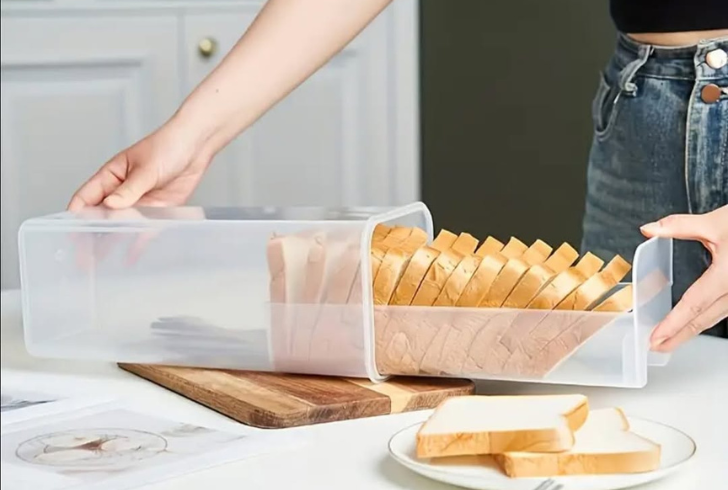Bread has a special way of elevating meals. From fresh bakery loaves to homemade sourdough and even a chewy bagel, every bite feels comforting. The only challenge comes later—finishing a loaf before it hardens or dries out. Many people have faced the disappointment of throwing away stale bread.
But a surprisingly simple trick is now capturing attention online, and it might just solve that problem.
The Viral Celery Trick
Food and wellness blogger Nicole Modic, the creator of Kale Junkie, recently shared a hack that went viral on social media. In her short video, she explained that adding a few stalks of celery to a bread bag could extend freshness for two to three weeks. The idea sounds unusual at first, yet there is science behind it.
Celery is naturally high in water. When sealed in a bread bag, it slowly releases moisture. That extra humidity helps the bread resist drying out, which delays staleness. According to Modic, the bread not only stays soft but also avoids mold growth when stored this way.
How to Try the Hack
The process itself requires almost no effort:
1. Place one or two clean celery stalks in the bread bag.
2. Seal the bag tightly.
3. Store it in the fridge for the best results.
Over time, the bread absorbs just enough moisture from the celery to stay soft and pleasant to eat. However, balance matters. Too much water could actually encourage mold instead of preventing it.
Why This Works
Food safety experts explain that bread usually spoils in two ways. It either goes stale as moisture escapes or develops mold when exposed to excess humidity. Celery strikes a balance by creating a slightly more humid environment without soaking the bread directly.
Darin Detwiler, professor at Northeastern University and author of Food Safety: Past, Present, and Predictions, described it as a process of “moisture management.” Bread stored with celery gains enough humidity to resist rapid drying, yet not so much that mold develops immediately.
Still, experts caution that the trick does not stop the natural changes inside bread. Cold storage can alter starch molecules, speeding up firmness even when outside moisture is present.
Things to Keep in Mind
Using celery does work, but several details matter for the best outcome. Experts recommend:
1. Choosing fresh celery stalks.
2. Removing leaves to reduce extra moisture.
3. Washing the stalks before adding them to the bag.
4. Keeping an eye on condensation, which could lead to mold.
There’s also the chance that bread may pick up a faint celery flavor over time. While not harmful, it may not appeal to everyone.
Other Ways to Keep Bread Fresh

Instagram | @myhome.mv | Freezing or airtight containers help keep bread fresh longer.
Although the celery method is getting attention, it’s not the only option. Food safety specialists often point to freezing as the most reliable method.
When wrapped snugly in plastic and sealed again with foil or a freezer-safe bag, bread can stay fresh for up to three months. The cold environment slows both moisture loss and mold growth. When it’s time to eat, you can let the slices thaw at room temperature or pop them straight into the toaster.
Another storage option is an airtight container, which helps slow down drying by limiting air exposure. Still, this method isn’t as effective as freezing if you’re planning to store bread long-term.
Slightly stale bread doesn’t have to end up in the bin either. Many dishes—like bread pudding, French toast, or croutons—actually turn out better with firmer slices.
Why People Love Food Hacks
Food hacks like the celery trick spread quickly because they offer easy, low-effort fixes for everyday frustrations. Since bread is such a kitchen staple, finding ways to make it last can save both money and waste. While the internet loves clever shortcuts, experts point out that these tricks work best when paired with proven methods. Freezing remains the most reliable approach, but adding celery can offer a short-term boost.
With the right balance of storage and small adjustments, any loaf—whether sourdough, baguette, or sandwich bread—can stay soft and flavorful for longer.




